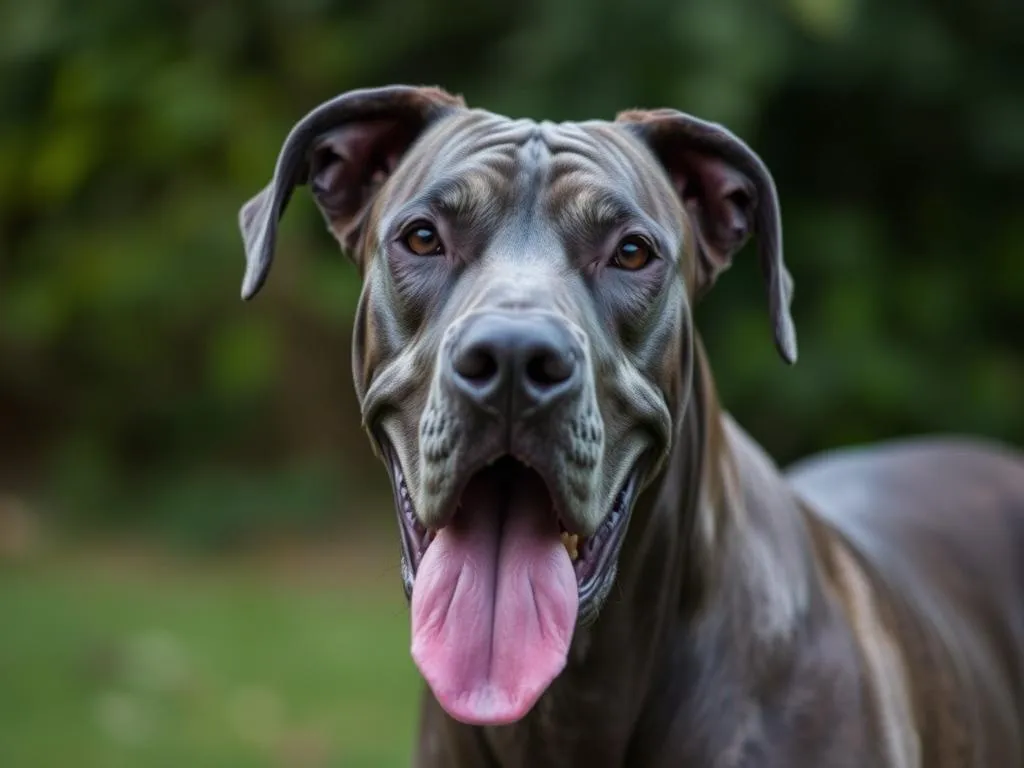
Introduction
When it comes to dog health care, certain breeds face unique health challenges, and the Great Dane is no exception. Among the potential health issues, bloat, or gastric dilatation-volvulus (GDV), stands out as a serious concern. This condition can be life-threatening and requires immediate attention. Understanding how to prevent bloat in Great Danes is crucial for any owner dedicated to their pet’s well-being.
Understanding Bloat
What is Bloat?
Bloat occurs when a dog’s stomach fills with gas, food, or fluid, causing it to distend. In severe cases, the stomach can twist on itself, leading to a condition known as volvulus. The medical terminology surrounding bloat can be daunting, but recognizing its symptoms is vital. Common signs include a distended abdomen, excessive drooling, and signs of pain or discomfort.
Causes of Bloat
Great Danes have a genetic predisposition to bloat due to their deep chests and large size. However, various dietary and environmental factors also contribute. Feeding habits, such as consuming large meals too quickly or eating low-quality food, can increase the risk. Additionally, certain behavioral triggers, like high levels of stress and abrupt changes in routine, can exacerbate the likelihood of bloat.
Signs and Symptoms to Watch For
Being vigilant for signs of bloat is essential. Physical symptoms include:
- Distended abdomen
- Excessive drooling
- Rapid breathing
Behavioral indicators, such as restlessness and pacing, can also signal discomfort. Early recognition is key, as bloat can escalate rapidly and become life-threatening.
Risk Factors for Great Danes
Breed-Specific Risks
Great Danes are particularly susceptible to bloat compared to other dog breeds. This vulnerability can be attributed to their anatomy, as their deep chests can trap gas more easily. Other large breeds may also experience bloat, but the incidence is significantly higher in Great Danes.
Age and Size Considerations
Age plays a crucial role in the risk of bloat. Studies indicate that the likelihood of developing bloat increases as dogs age. Furthermore, the size and weight of a Great Dane can contribute to their susceptibility. Larger, older Great Danes are at a greater risk, emphasizing the need for proactive prevention strategies.
Prevention Strategies
Proper Feeding Practices
One of the most effective ways to prevent bloat in Great Danes is through proper feeding practices. Implementing a feeding schedule that includes small, frequent meals can help reduce the risk. Feeding your Great Dane two to three smaller meals per day, rather than one large meal, can minimize the chances of their stomach distending.
Additionally, the quality and type of food play a critical role. High-quality dry food is often recommended over wet food, as it tends to produce less gas. Be cautious of food additives and ingredients that may contribute to digestive issues. Consult with your veterinarian to determine the best diet for your Great Dane.
Managing Exercise
Exercise is essential for a Great Dane’s physical and mental health, but timing is crucial. Avoid vigorous activities immediately before or after meals. Instead, allow for light walks before feeding and wait at least an hour after meals before engaging in intense play or exercise. This practice can help minimize the risk of bloat.
Reducing Stress and Anxiety
Stress can significantly affect your dog’s health, including their digestive system. Creating a calm feeding environment can help reduce anxiety during meal times. Techniques such as maintaining a quiet space, using calming music, or providing a soothing presence can be beneficial.
Additionally, be aware of any changes in your dog’s routine that may cause stress, and try to maintain consistency in their daily activities.
Regular Vet Check-ups
Routine veterinary care is essential in monitoring your Great Dane’s health. Regular check-ups can help identify any underlying issues before they escalate. Discuss vaccinations and screenings specific to Great Danes with your veterinarian to ensure your dog receives the best possible care.
Immediate Actions if Bloat Occurs
Recognizing an Emergency
In the unfortunate event that bloat occurs, recognizing an emergency situation is critical. Severe bloat can manifest through extreme signs, including:
- A distended abdomen that feels tight
- Signs of severe pain
- Rapid breathing or panting
- Unproductive attempts to vomit
If you observe these symptoms, it is crucial to seek veterinary assistance immediately.
First Aid Steps
While waiting for veterinary help, there are a few first aid steps you can take. Keep your dog calm and avoid any attempts to feed or give them water, as this could worsen the situation. Do not try to relieve the bloat at home; misconceptions about home treatments can lead to further complications.
Long-term Care and Monitoring
Observing Changes in Behavior or Health
Keeping a close eye on your Great Dane’s behavior and health is vital. Maintain a health journal to track any changes, including eating habits, energy levels, and any signs of discomfort. Regular monitoring can help you catch potential issues early, allowing for timely intervention.
Nutritional Adjustments Over Time
As your Great Dane ages, their nutritional needs may change. Consult with your veterinarian to adapt their diet accordingly, ensuring it meets their health requirements. This is especially important for preventing bloat, as older dogs may have different digestive capabilities compared to their younger counterparts.
Conclusion
Preventing bloat in Great Danes is a multifaceted approach that involves understanding the condition, recognizing risk factors, and implementing effective prevention strategies. By following these recommendations, you can significantly reduce the likelihood of bloat and ensure your Great Dane enjoys a long, healthy life. Prioritizing proper feeding practices, managing exercise, reducing stress, and maintaining regular veterinary check-ups are all essential components of comprehensive dog health care.
Staying informed and proactive about your Great Dane’s health will pay off in the long run, providing both you and your dog with peace of mind. Remember, a healthy dog is a happy dog!









